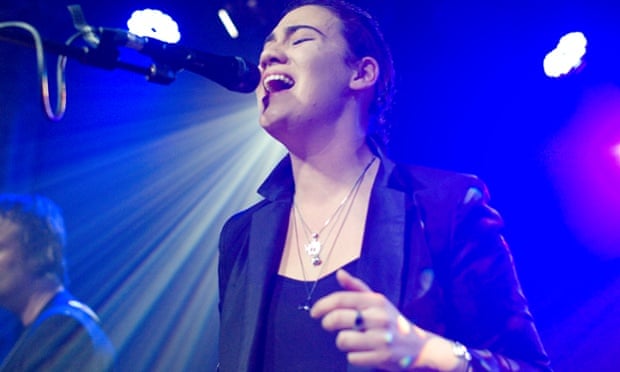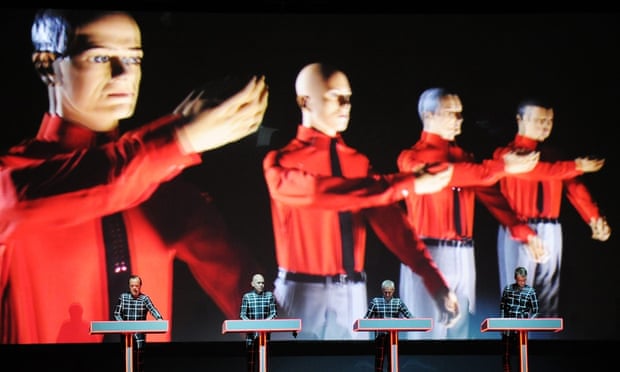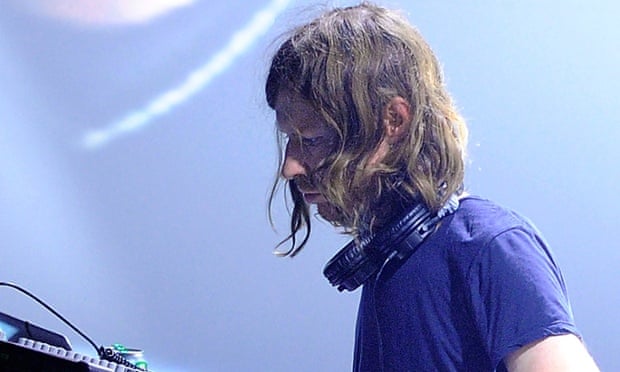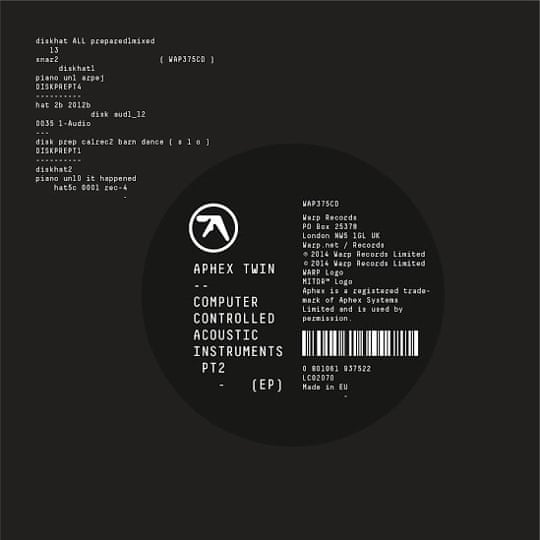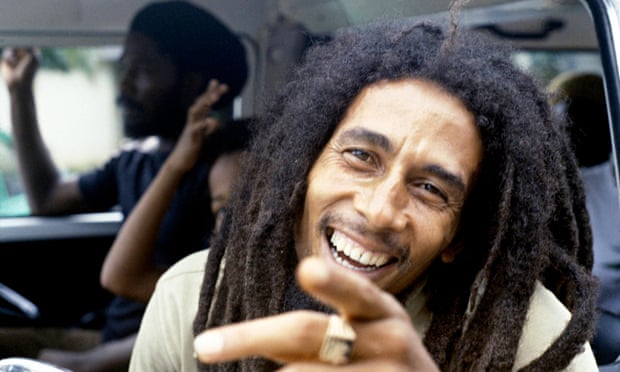
“Me no really say no bad things about no one, cause me have a full heart,”
Bob Marley once told me. “That is a sign of being an ignorant and undisciplined
human being. Me prefer just to understand the situation and suss it out and say
what is right and what is wrong.”
Confident in taking a stand, Bob Marley was not afraid to sing with moral
authority. As events echoing the struggles he took part in and sang about take
place around the world, I often find myself wondering: what would Bob have made
of this if he were alive to celebrate his 70th birthday? What songs might he
have written? Except that, usually, he already has.
As the repeated cop killings of black males across US prompt multiracial
“Black Lives Matter” demonstrations, there’s No Woman, No Cry and Johnny Was a
Good Man; when brutality cloaked as religious extremism strikes terror, Bob
sings, in We and Dem: “Me no know how we and them gonna work it out.” As the
Arctic melts and African lakes dry up, we all yearn for the “natural mystic/
blowing through the air”, and agree that the system of what Rastafarians call
“Babylon” – rapacious capitalism or a repressive regime – is indeed “a vampire,
sucking the blood of the sufferer”. Yet today, Bob Marley often appears as
remote a figure to young music-lovers as Leadbelly was to me back then, a
compelling but distant figure.
I teach a course at New York University called Marley and Post-Colonial
Music, and when you teach about people you actually knew, surreal moments occur.
Among the oddest? Seeing Saturday Night Live joke about my class on TV. “And in
a cruel twist,” deadpanned Seth Myers, “the NYU Bob Marley class is only being
offered at 8am.” The funny thing was, I really didn’t get the joke. (Neither did
my students, who plaintively emailed: “Do we really start so early?”) That’s
because the punchline depended on the idea that Marley was more notable for
marijuana than music, and implied that his fans must, by definition, be lazy
slackers. Yet not only were my students top rate, the Bob Marley I knew was
quite different. For him, ganja was a spur, a tool for a work ethic that was
impeccable, unceasing, even relentless. The in-house joke about Bob was “first
on the tour bus, last to leave the studio”. It was part of his leadership. But
that is often not how he is perceived, certainly in the US.
The music editor
of a popular US website recently told me of programmers at a midwestern college
radio station who scoffed at him for wanting to play Marley; that was apparently
an indicator of flakiness. He’s become the symbol of a spring break, ultra-amped
THC vape fever.
And when he does get played on the radio now, it’s the mellow songs, not the
angry songs, that get heard – the ones that have been compiled on albums such as
Legend, leaving the grittier material to collections such as Kingston 12. When
my class studied Exodus, and its sequencing, with the confrontational songs of
side one and the sunlit uplands of side two, they realised that though they all
knew the cheery love tunes, none of them had heard the songs of struggle, and
that applied to all Bob’s catalogue. Yet I remember his wry smile and tone of
mild protest as he asked “How long must I sing the same song?” when he was
criticised for following Exodus with the soft, sweet Kaya.
“If I had more men behind me, I would just be more militant!” he insisted.
And yet Bob was also happy to be making a new point. He didn’t want to be seen
only as a soldier, because “you have to think of a woman sometimes, and sing
something like Turn the Lights Down Low”. He couldn’t have anticipated that one
day the fighter would have been transformed in the popular imagination into a
lover and feelgood party dude. But as Bob said about his music: “What I like
about it is the way it progress.”
I am often asked if Bob Marley really meant all that righteous stuff. He did.
He was not infallible, but he tried to live up to his ideals, and he was
sincere. He once said to me: “The truth is the truth, you know. Sometimes you
have to just sacrifice. I mean, you can’t always hide, you have to talk the
truth. If a guy want to come hurt you for the truth – then, I mean, at least you
said the truth.”
Some of these exchanges with Bob occurred in 1976, at a pivotal moment in his
life. The previous year, I had been his PR at Island Records for seven months,
part of the team that helped break him in the UK with No Woman, No Cry. Then I
started writing frequently about him, on the road and at home. On one
assignment, Bob invited me to crash at his ample colonial home on Kingston’s
Hope Road, which was quite a commune, with an ever-revolving cast.
The conversations we had in those days, some of which I taped, were freighted
with a heavy subtext, immediate in a way I could scarcely have understood. Once
he said: “Jamaica is a funny place, mon. People love you so much, dem want to
kill you.” I took it to be an exaggeration. In the studio, he looked anxious
while recording one of his sunniest songs, Smile Jamaica. He told me: “Jamaicans
have to smile. People are too vex.” Late at night, he strummed a guitar in the
yard at Hope Road, composing the words that would appear on Guiltiness, about
big fish who always try to eat up small fish. Ruthless, self-interested
predators who would, Bob predicted, “do anything, to materialise their every
wish”.
Sure enough, the day after I left Hope Road for London, four politically
motivated gunmen broke into the Hope Road haven, shooting Bob, his wife Rita and
manager Don Taylor, and escaped. Bob and the Wailers went into exile for a year
and a half.
While I was researching The Book of Exodus, my book about Bob, the wife of
one of the dons – the gangleaders – who had grown to become a pacifist Rasta,
revealed that her husband had discovered the plot to shoot Bob, and called to
warn him. Thus even as Bob was hinting at vicious forces, he knew the plot
against him was ready. He knew the shooting was coming, even before the guns
barked. Just two days later, he went ahead and played the Smile Jamaica concert
designed to cheer and unite the people ahead of the December 1976 general
election, which was contested against a backdrop of vicious rivalries – between
the gangs and the two main political parties – with the dons and politicians
alike all seeing Bob as a figure they wanted on their side. Onstage on 5
December, Bob was still bandaged, and had a bullet in his arm that would remain
there to the grave; removing it would have put his guitar playing at risk. So he
well understood the price you can pay for taking a political stand, and he
carried on anyway. That’s courage.
Bob had a pragmatic, some might say cynical worldview. When the 1976 Notting
Hill Carnival riots rampaged on my old street, Ladbroke Grove, I happened to be
in Kingston talking to him. Breathlessly updating him on the plans to ban
Carnival, I pushed for his response. His thoughtful reply could equally apply to
today’s larger scale conflicts: “Well, we can’t really solve those problems,
because the people who start the problem know why dem do it. Them thing yah is a
plan because people must be getting too revolutionary, or they know too much
things. Something a gwaan.” He never lost sight of what it fundamentally meant
to be a Jamaican: “It’s fact that we come from the shores of Africa as slaves.
It’s really fact. So all the money and power them people have is just to keep we
in slavery still. And when you talk like that,” he continued, with a special
scorn, “them say you a talk about politics. They can talk about whatever, but as
far as the way me see it is – disobey them and die. Obey and die, too, because
if you obey them, you goin’ dead.”
A musician who laid his life on the line for his beliefs, expressed in songs
a child could hum? The story sounds almost quaint today. Now that musicians no
longer turn to protest as they once did, what does the message of Bob Marley
mean?
Throughout his life, Bob was an artist/entrepreneur who sought to control his
musical production. Having been royally ripped off by successive producers in
the early days, Marley was prepared, near the end of his life, to make a deal
with a multinational to fund his Tuff Gong label. It would have been a
collective for the many Jamaican musicians he esteemed. But his musical legacy
is now in the hands of a different generation. The post-mortem marketing of
Marley has been phenomenally successful, and his estate is one of the most
lucrative of any musician.
For several years after his death intestate, his One Love image was mocked by
a string of lawsuits, some between factions within the Marley family, some
involving the Wailers. (Disclosure: I was a witness for the Wailers band in one
such case.) Famously, amid the chaos of Bob’s failure to leave a will, his widow
Rita was badly advised by her lawyers; she forged Bob’s signature and was
removed from her role as estate executor. Being Bob for signature purposes was
apparently a longtime spousal habit, anyway – with a resigned sigh, Bob often
told friends: “Rita knows how to sign my name better than I do.” And on it went
from there. Among the results of the lawsuits is a curious conundrum for the
band that defined the spirit of brotherly Rasta I-nity. Two bands currently tour
as the Wailers, one featuring guitarist Al Anderton; the other, the iconic
bassman Aston “Family Man” Barrett, who was bankrupted by all the
litigation.
Meanwhile the post-Bob Marley empire grows apace. Its reach extends from
headphones to apparel, leisure reggae cruises and beyond.
In song, Marley predicted that not one of his seed would “sit on the sidewalk
and beg for bread”, and so they have not. He trained his children in music, and
several of them are successful artists today. The social constraints and family
rejection that Bob experienced, the conflicts that shaped him into the artist of
activism and empathy he became, were not his 11 children’s experience. He left
school in his early teens and was self-educated; they attended elite schools.
Bob’s eldest daughter, Cedella, a noted fashion designer, created the look for
the Jamaican Olympic team, writes children’s books and is producing upcoming
musical Marley. Ziggy and Rohan Marley are following in their farmer father’s
footsteps and launching eco-inflected produce lines. The young Marleys are
musically productive, too. With dancehall dons such as Buju Banton and Vybz
Kartel locked up, and audience fatigue with a diet of guns and slackness, the
Marley youth (loosely spearheaded by Damian, Stephen and Ziggy) are seen as
leaders of Jamaica’s progressive reggae renaissance, called the “roots revival”.
In collaborations such as Distant Relatives, with hip-hop artist Nas, Damian in
particular is fulfilling his father’s dream of bridging the Caribbean-American
diaspora.
Now the family is launching the Marley Natural brand of ganja. Marley Natural
has drawn praise and rebukes, but it is timely. Suddenly, ganja is starting to
be a legal commodity. The Marleys’ weed enterprise will create jobs in a sector
that many hope will transform the Jamaican economy, maybe even help break its
overdependence on tourism. If all goes well, it might help with the trickle-down
effect that Bob once advocated to me, based on the belief that the rich have a
duty to do something with their money. Speaking in a voice dripping with
sarcasm, he criticised men who “have $32m or more in the bank, and he wouldn’t
even have a factory so somebody can get a job or learn a trade, you know? They
just [want to hold their] money – and money is just like water in the sea.”
Critics of Marley Natural, like Dotun Adebayo in these pages, feel that
identifying Bob so thoroughly with weed trivialises his message. It’s ironic
that Bob’s great solace and inspiration, the sacred herb, which he took
seriously as a Rastafarian sacrament, has become part of a reductive perception
of Marley. Bob’s activist legacy is currently under threat of falling victim to
his status as a lifestyle choice.
Bob’s own values and perspective on how to live were clear. “You make sure
you do good,” he told me. “Although it hard fi always do good to everybody, you
do the best you can. Then God will give you pay, because it is so you get paid.
You might get material pay from man, but you get spiritual pay from God.”
And that’s the gap in the Marley legacy – the lack of some central
educational or cultural public endeavour bearing his name that is purely
altruistic. Various Marleys already have socially minded endeavours – notably
the Rita Marley Foundation in Ghana, supporting a village school and women’s
health. But many among those who love what Bob Marley represents long to see
some organised philanthropic attempt in Jamaica to manifest the altruism Bob
exemplified; he was known for handing cash out to lengthy lines of sufferers and
is estimated to have supported thousands in Jamaica, quite informally. Along
with sacrifice, charity is part of what made him a legend.
Maybe the concern is that whatever the Marley estate might do, it would never
be considered enough; that you can’t please everyone and those who feel rejected
might prove troublesome. The concern might be real. Maybe the forces arrayed
against peace-making cultural initiatives truly are prohibitive, despite the
estate’s wealth. Or maybe it’s a difficult dream worth pursuing. Certainly, such
a move would thrill the global Marley tribe and fulfill the mandate Bob stated
to me in 1976: “People have to share.”
One of the only times I saw Bob Marley angry was when he spoke about his
childhood in Trench Town. “When I live down in the ghetto, every day I have to
jump fence, police try and hold me, ya dig? Not for a week – for years! Years,
till we have to get free now. It’s either you a bad, bad man and they shoot you
down, or you make a move and show people improvement. It doesn’t have to be
material, but in freedom of thinking.”
Marley processed that beleaguered background into a spiritually led
philosophy of survival, rooted in knowing human nature, expressed through music.
Because, as he told me, “We grew up rough, but it’s life. Sometimes you have it
hard, sometimes you have it soft. Sometimes it is just problems, you know,
problems every day. The youth grow up with questions like, What is life? What is
my future? Because everybody a search.” Bob Marley found an answer in Rasta. On
the 70th anniversary of his birth in rural colonial Jamaica, millions still find
encouragement, comfort and hope in him.









